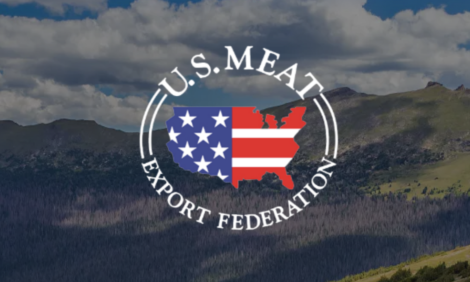



CME: Hog Producers Looking at Profitable Year
US - The profit pictures for the cattle feeding and farrow-to-finish pig production sectors for this year could hardly be more different, write Steve Meyer and Len Steiner.
Cattle feeders — at least when one considers full yardage
and feed markup costs — are looking at severe losses this year while
hog producers are looking at their third profitable year in a row.
The chart below shows projected breakeven costs
through July courtesy of the Livestock Marketing Information Center.
As we mentioned, these estimates include full yardage and feed
markup costs and thus over-state the cash cost situation of yardowned cattle. But they are still an accurate portrayal of long-run costs
and they imply some serious deficits for cattle this summer, especially
with the $4-$5 selloff we have seen in recent sessions.
The column chart below paints a very different picture for hog producers. Continued strength in Lean Hogs futures and
moderating costs have left expected returns near $20 per head this
summer. We say “moderating“ costs because they are not expected to
be significantly lower for the year than they were in 2011. Our estimates, using closing corn and soybean meal futures prices for Tuesday, are for Iowa farrow-to-finish operations to see breakeven costs of
$86.06/cwt carcass in 2012. That is just $0.57/cwt lower than last year.
Similar costs and, at least according to Lean Hogs futures prices,
slightly higher hog prices should provide profits roughly $2.40 per head
higher than in 2011. Our current estimate is for average profits of
$7.35/head this year.
Why the difference in performance — especially given record
-high fed cattle prices? The answer is found in the intermediary feeder
cattle market. Cattle feeders buy virtually all of the animals they feed
where farrow-to-finish producers simply transfer pigs internally. The
need to buy feeder animals leads to behavior that frequently torpedoes
cattle feeding profits as yards chase feeder cattle to the point of bidding away all profits. That is true in spades this year as feeder cattle
supplies are very tight. Oklahoma City 600-700 pound feeder steers
topped $170/cwt the week of February 24 and remained at $169.61
last week. 400-500 steer calves have eclipsed the $200/cwt. mark the
past two weeks in OKC.
Of course, not every hog is produced in a farrow-to-finish
enterprise. A substantial number of pigs are traded each week as
either weaned pigs (10-14 pounds, roughly 21 days old) or feeder pigs
(40-50 pounds, roughly 8 weeks olds), moving from specialized farrowing operations to feeding operations. USDA’s Agricultural Marketing
Service reported prices for 5.1 million weaned pigs and 1.2 million
feeder pigs last year but more (number unknown) were traded through
private treaty and not reported to USDA. A good portion of these pigs
are formula priced on spot markets or on deferred Lean Hogs futures
with current or deferred corn and soybean meal prices frequently factored in as well. But the spot-traded pigs are subject to the same forces as feeder cattle. Weaned pig prices have been near record high in
recent weeks, driven by expected summer profits and, to some degree, death losses related to porcine reproductive and respiratory syndrome (PRRS). These losses have been large this year but whether
they are greater than in years past remains to be seen.
ERRATA — Our comment in yesterday’s DLR regarding
the capacity impacts of a potential closing of Tyson’s Denison,
Iowa beef plant was in error. We misread Tyson’s statement which
said “ . . . the Dakota City plant . . . will be able to increase the number
of cattle it harvests for processing. However, the change is not expected to increase Tyson’s overall beef slaughter capacity.“
The Dakota City plant has, for many years, processed more
carcasses than it has produced. Many of those extra carcasses have
come from the Denison plant which has very limited, if any, capabilities
for carcass fabrication. So, according to the Tyson statement, “The
Dakota City plant will no longer need a supplemental supply of beef
carcasses from the company's satellite beef plant in Denison. This
means that the Denison facility. . . may close sometime in 2013.“
Tyson’s statement says its total capacity “is not expected to
increase“ but the company never says its capacity will actually decrease. The statement regarding carcass shipments seems to indicate
that the two changes will more or less offset each other. If that is the
case, overall industry capacity will remain the same, maintaining the
current over-capacity in the beef processing sector even if the Denison
plant is closed in 2013.









